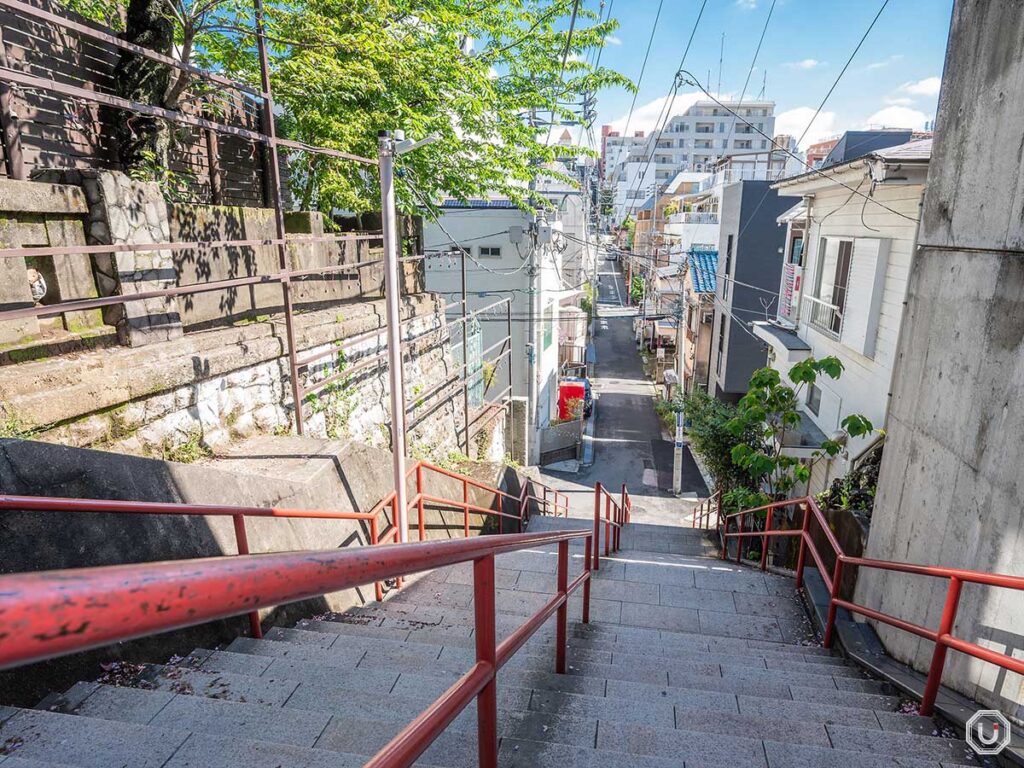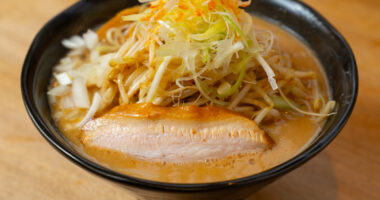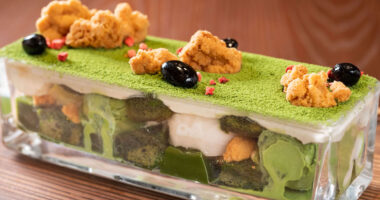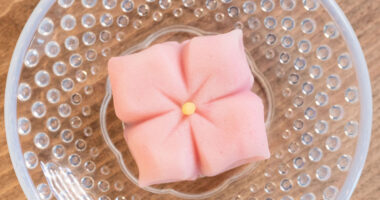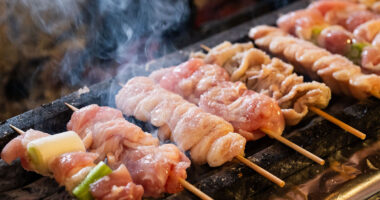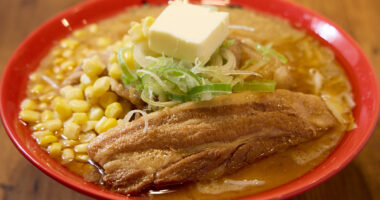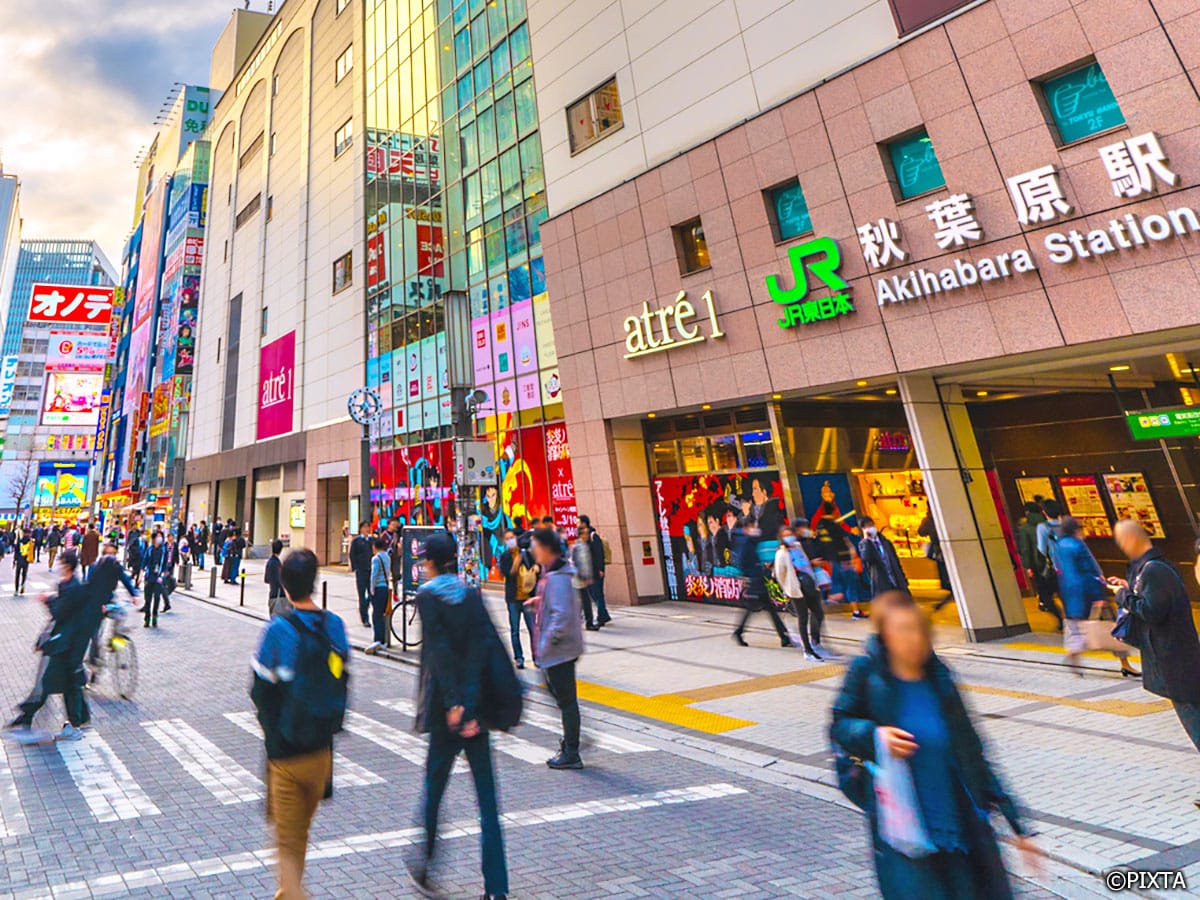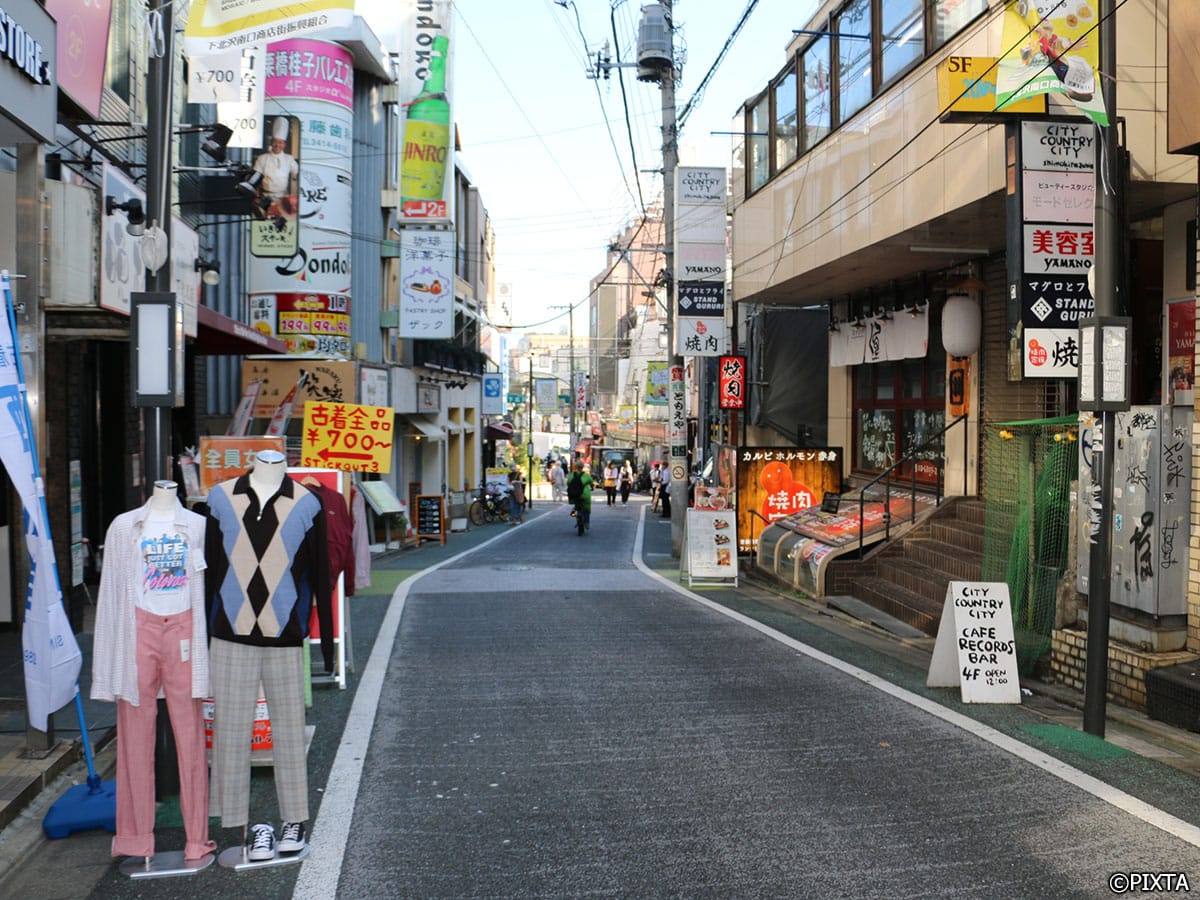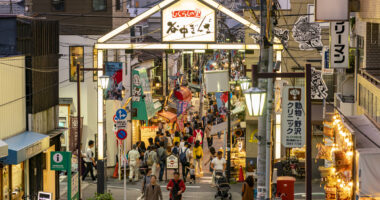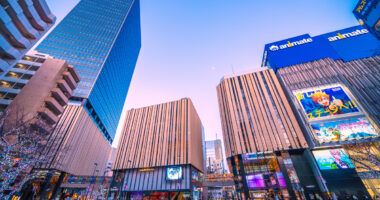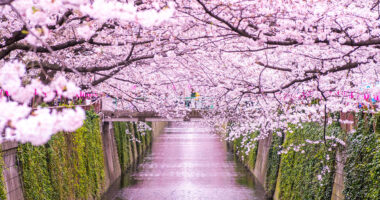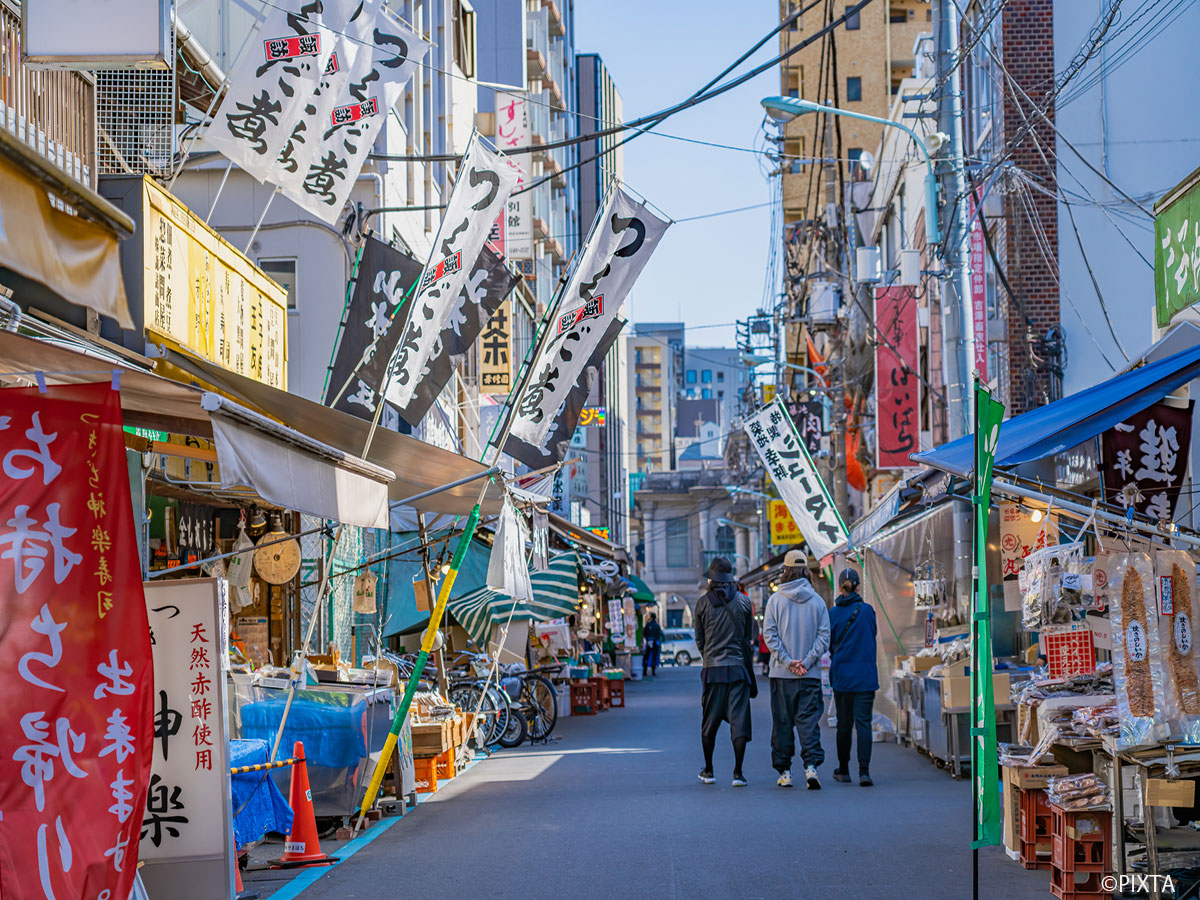For anime fans traveling to Japan, there’s a must-visit shrine in the Yotsuya neighborhood of Tokyo. Suga Shrine is the real-life model for a crucial scene in Makoto Shinkai’s anime film Your Name.
The Otokozaka stairs at Suga Shrine also appear in the film’s poster.
Otokozaka stairs: a constant photo hotspot for visitors to Suga Shrine
Due to the film’s global success, the shrine attracts visitors not only from Japan but from all over the world. Especially popular are the Otokozaka stairs (sometimes introduced outside of Japan as “otokodan”) at the entrance of Suga Shrine, a favorite photo spot.
Many visitors can be seen with their cameras, trying to recreate a scene from Your Name.
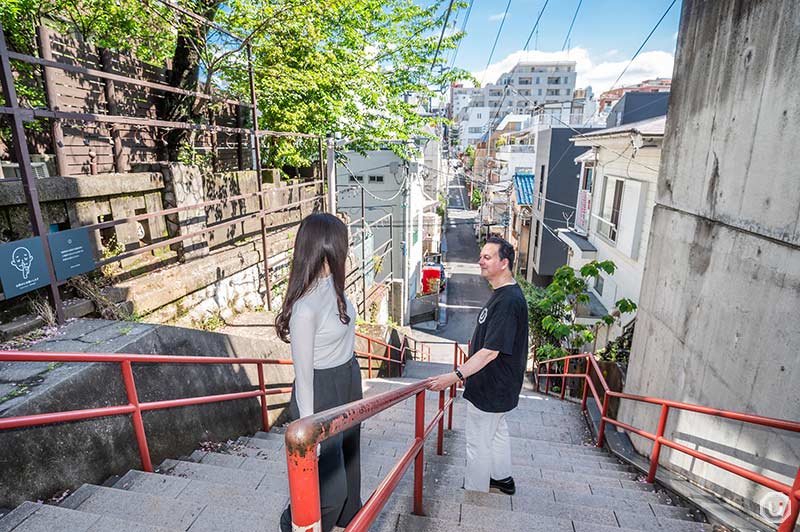
A photo recreating a scene from Your Name
Suga Shrine has two sets of stairs leading to its main grounds. The Otokozaka stairs which appear in the film are distinguished by their red handrails.
At the bottom of these stairs stands a stone monument inscribed with the shrine’s name.
On clear mornings, there are fewer visitors, making it perfect for taking photos. Be sure to check the weather forecast before you go!
Suga Shrine feels like stepping into an anime world
The grounds of Suga Shrine also evoke the enchanting atmosphere of Your Name.
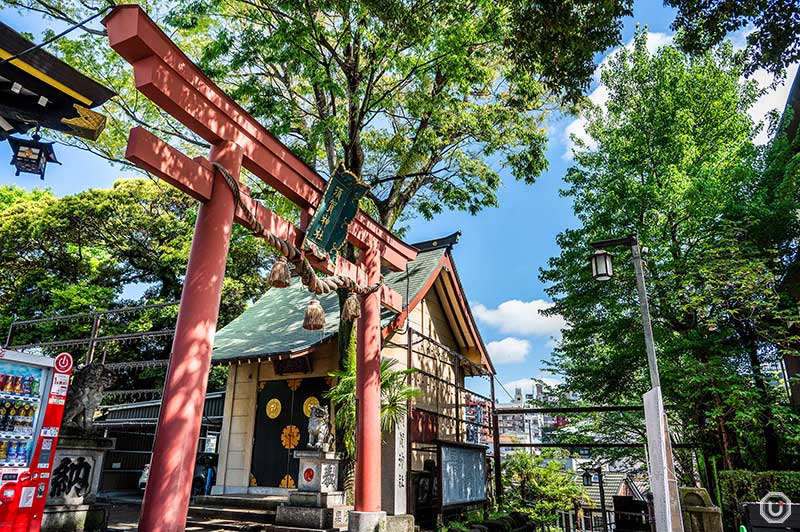
The torii gate at Suga Shrine
After passing through the torii gate, look to your right and you will see the water purification pavilion (known in Japanese as either chōzusha or chōzuya) where visitors cleanse themselves before paying their respects.
First, hold the ladle with your right hand and scoop up some water, then pour it over your left hand. Switch the ladle to your left hand and wash your right hand. Next, hold the ladle with your right hand again, rinse your mouth, and clean the ladle’s handle. This is the proper etiquette for using the water purification pavilion.
At Suga Shrine, signs explaining the etiquette in both Japanese and English are posted together with illustrations.
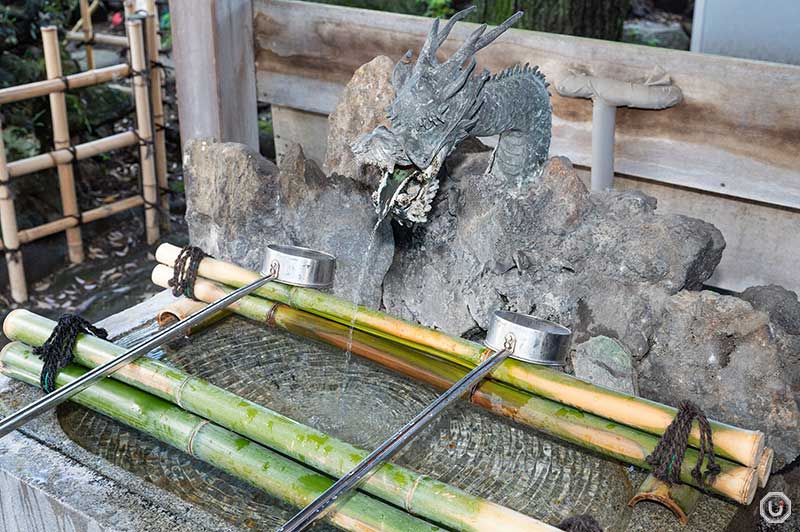
Like many shrines, Suga Shrine’s water purification pavilion features a dragon motif
After purifying yourself, proceed to the main shrine building to pay your respects.
The main shrine building is distinguished by its golden decorations, combining a solemn atmosphere with a sense of grandeur.
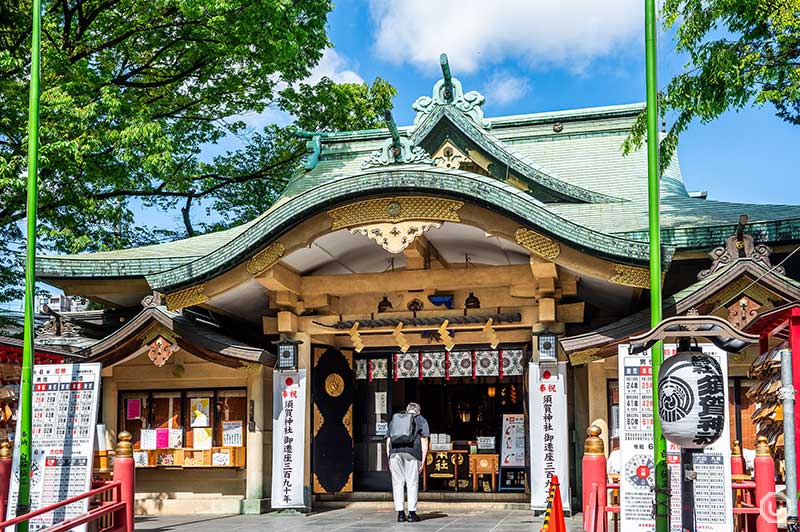
The main shrine building at Suga Shrine
The enshrined deities are Susanoo-no-Mikoto, also known as Suga Ōkami, and Ukanomitama-no-Mikoto.
Susanoo-no-Mikoto is revered not only as a deity of good fortune but also as a protector against evil spirits, natural disasters, and epidemics, with a longstanding tradition of worship. Ukanomitama-no-Mikoto, also known as Inari Ōkami, is believed to bring good fortune, abundant harvests, and prosperity in business.
After praying, take some time to explore the shrine grounds. Located on a hill, Suga Shrine offers a splendid view of Yotsuya, especially on sunny days.
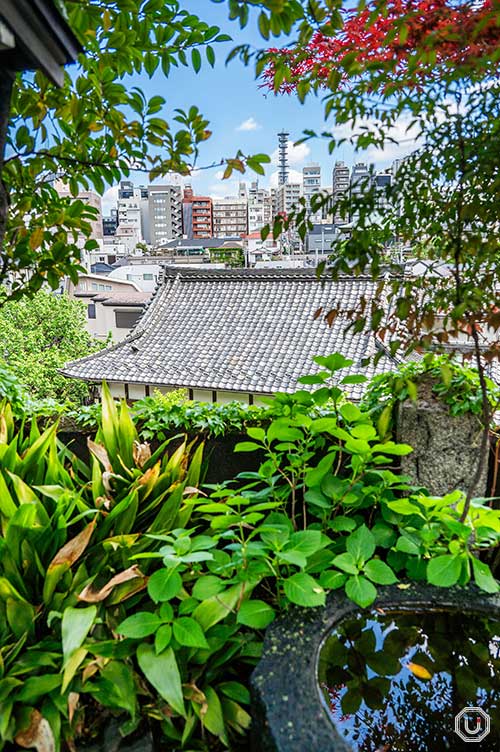
Be sure to get a shrine seal and votive tablet when visiting Suga Shrine
Besides the Otokozaka stairs, fans of Your Name will be delighted by Suga Shrine’s ema and goshuin shrine seals.
Ema, wooden votive tablets where you write your wishes and offer them to the shrine, are available for 700 JPY. At Suga Shrine, the front of the ema features an image of the Otokozaka stairs. Some visitors draw illustrations on the back or famous lines from Your Name.
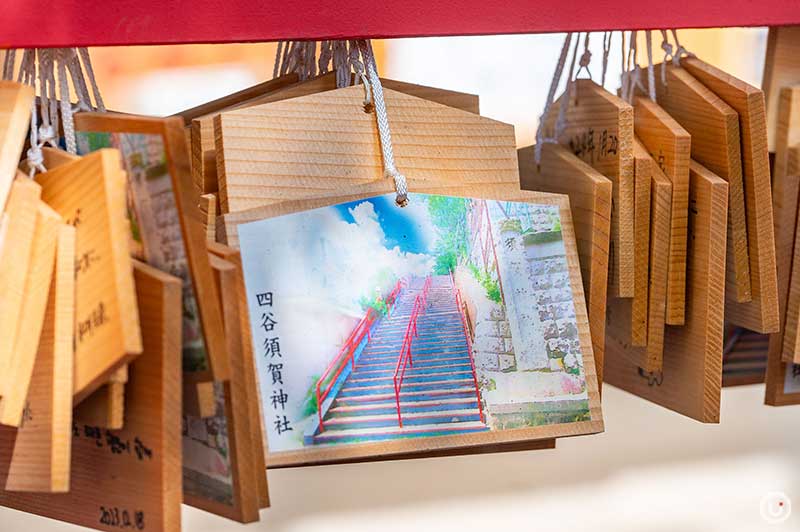
Ema at Suga Shrine 700 JPY
It’s also common for creators of popular anime and games to offer ema, praying for the success of their works. This shows that Suga Shrine holds a special place not only for fans but also for those working in the anime and gaming industries.
There are two types of goshuin at Suga Shrine: a simple one with just the shrine’s name and another with a gold-leaf illustration of the Otokozaka stairs. For fans of Your Name, the gold-leaf version is a must-have! It makes for a great memento to display in your room.
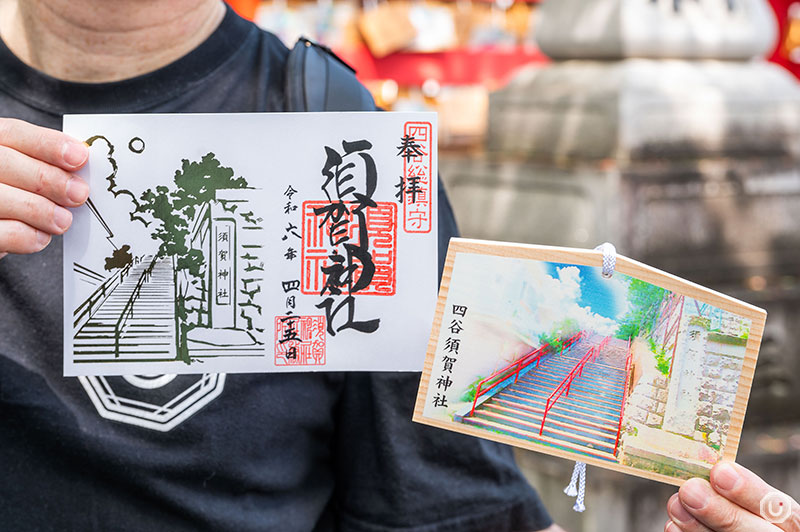
Suga Shrine goshuin (left) 1,000 JPY
Omikuji are available in multiple languages
Suga Shrine offers a variety of omikuji (paper fortune slips), all with charming designs.
One popular choice is the sensu mikuji, shaped like a sensu, a Japanese folding fan. The fortune is written on the fan’s surface.
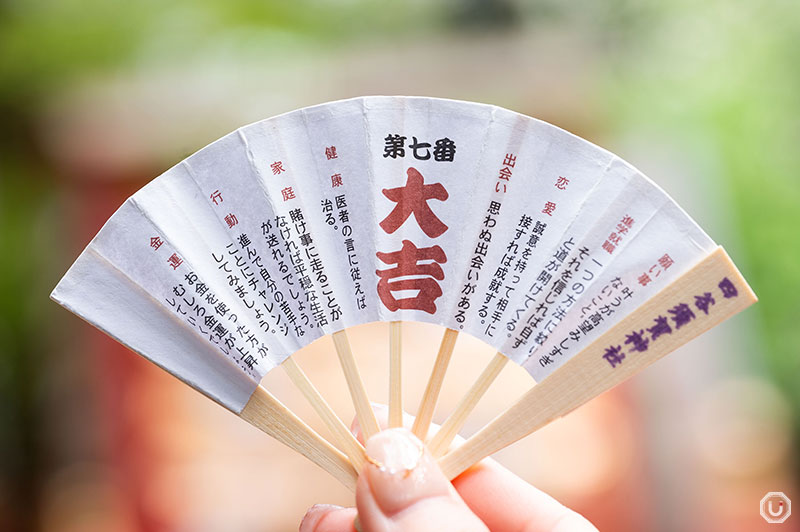
Sensu mikuji
The sensu, often used in traditional Japanese performing arts like kabuki, has characteristics unique to Japan in terms of design, decoration, and materials.
The sensu omikuji comes with a chain, so you can attach it to your bag as a keepsake. After reading your fortune, you can keep the fan as a delightful souvenir representing Japanese culture.
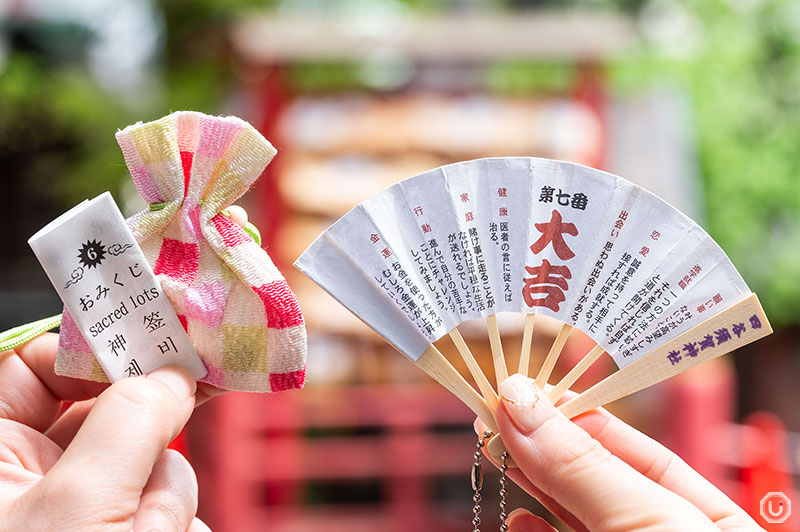
Besides the sensu omikuji, Suga Shrine offers many other types of omikuji
Suga Shrine also caters to international visitors with omikuji available in English, Korean, and Chinese. Each fortune (or “sacred lots” as the shrine calls them in English) covers ten categories, including love, money, and travel luck, all written in multiple languages.
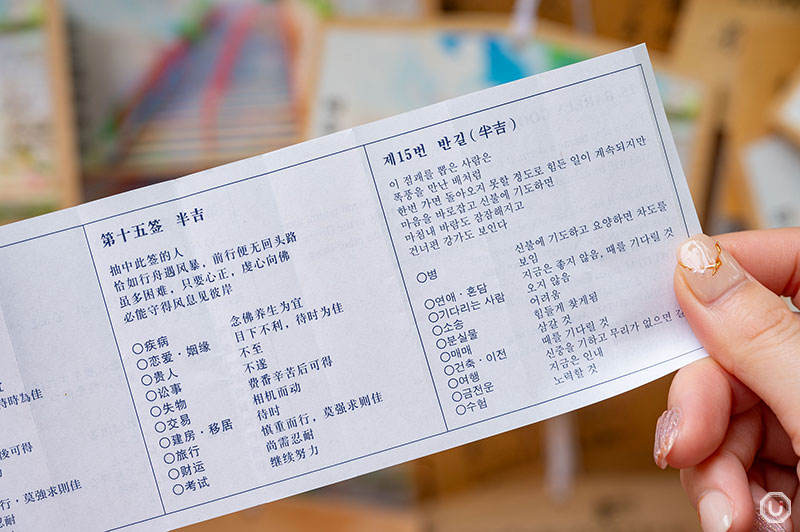
Omikuji in various languages
Thanks to the success of Your Name, Suga Shrine has become known worldwide.
With signs explaining the shrine etiquette in English and omikuji available in multiple languages, it’s very friendly to international tourists. It’s an ideal destination for first-time visitors to a Japanese shrine.
Suga Shrine offers charm and appeal to everyone, not just anime fans.
Shrine information
| Name | 須賀神社 Suga Shrine |
|---|---|
| Address | 5-6 Suga-chō, Shinjuku-ku, Tokyo
|
| Access |
Yotsuya-sanchome Station 7-minute walk from Yotsuya-sanchome Station Exit 3
Yotsuya Station 11-minute walk from Yotsuya Station Yotsuya Exit |
| Phone number | 03-3351-7023 |
| Visiting Hours | 24 hours |
| Sacred Items | Available from 10:00 to 17:00 |
| Goshuin | Available from 10:00 to 17:00 |
| Omikuji | Available from 9:00 to 17:00 |
| Admission fee | Free |
| Official website | https://sugajinjya.or.jp/ |
| Other information |
|
※The information in this article is current as of April 2024.
